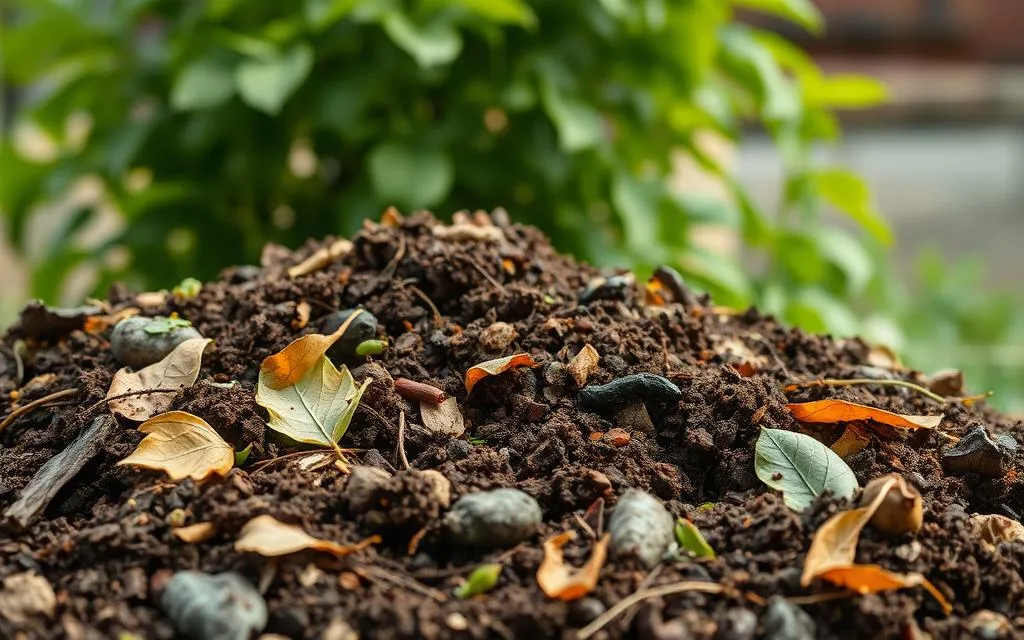Discover 19 beautiful modern rock garden ideas to elevate your outdoor space. Transform your garden with these creative and beautiful designs. Rock gardens have long been a staple in landscape design, offering a unique blend of natural beauty and low-maintenance appeal. In modern times, these gardens have evolved to incorporate contemporary aesthetics, making them a perfect addition to any home. Whether you have a sprawling backyard or a small urban space, a modern rock garden can transform your outdoor area into a serene oasis. The Essence of Modern Rock Gardens Modern rock gardens are characterized by their minimalist design, clean lines, and the use of a variety of rocks and plants. They often incorporate elements such as water features, sculptures, and lighting to create a tranquil and visually appealing environment. The key to a successful modern rock garden lies in the careful selection and arrangement of rocks and plants to achieve a harmonious balance. Benefits of Modern Rock Gardens Low Maintenance: Once established, rock gardens require minimal upkeep, making them ideal for busy homeowners. Water Efficiency: Rock gardens are drought-tolerant and can thrive with minimal water, making them environmentally friendly. Aesthetic Appeal: The combination of rocks, plants, and other elements creates a visually stunning landscape. Versatility: Rock gardens can be adapted to fit any space, from large yards to small patios. 19 Beautiful Modern Rock Garden Ideas 1. Zen-Inspired Rock Garden A Zen rock garden, also known as a Japanese rock garden, emphasizes simplicity and tranquility. Use gravel or sand to create patterns that mimic water, and place large rocks strategically to represent mountains or islands. Add a few carefully chosen plants to complete the serene look. 2. Succulent Rock Garden Succulents are perfect for rock gardens due to their low water requirements and unique shapes. Combine different varieties of succulents with rocks of varying sizes to create an eye-catching display. Consider using a mix of colors and textures to add visual interest. 3. Rock Garden with Water Feature Incorporate a small pond, fountain, or waterfall into your rock garden to add a soothing element. The sound of running water can create a peaceful atmosphere, while the water feature itself becomes a focal point in the garden. 4. Desert-Inspired Rock Garden Embrace the beauty of the desert by using cacti, agave, and other drought-tolerant plants. Pair these with sandy soil and large rocks to create a desert-like landscape. This type of garden is perfect for hot, dry climates. 5. Rock Garden with Ornamental Grasses Ornamental grasses add movement and texture to a rock garden. Choose grasses that are well-suited to your climate and plant them among the rocks. The contrast between the rigid rocks and the flowing grasses creates a dynamic visual effect. 6. Alpine Rock Garden Alpine plants are adapted to harsh, mountainous environments, making them ideal for rock gardens. Create a rocky landscape with small, hardy plants such as mosses, sedums, and alpine flowers. This type of garden is perfect for cooler climates. 7. Contemporary Rock Garden with Sculptures Incorporate modern sculptures or art pieces into your rock garden to add a contemporary touch. Choose sculptures that complement the overall design and place them strategically among the rocks and plants. 8. Rock Garden with Pathways Create pathways through your rock garden using stepping stones or gravel. This not only adds functionality but also enhances the overall design. Use different materials and patterns to create a unique look. 9. Rock Garden with Edible Plants Combine beauty and functionality by incorporating edible plants into your rock garden. Herbs, strawberries, and small vegetables can thrive in a rock garden setting. This adds an element of practicality to your landscape. 10. Minimalist Rock Garden Embrace the minimalist aesthetic by using a limited color palette and simple, clean lines. Choose a few large rocks and a handful of plants to create a sleek, modern look. This type of garden is perfect for small spaces. 11. Rock Garden with Moss Moss adds a lush, green element to a rock garden. It thrives in shady, moist environments and can be used to cover rocks or create a soft ground cover. Moss gardens are perfect for creating a tranquil, forest-like atmosphere. 12. Rock Garden with Flowering Plants Add a splash of color to your rock garden with flowering plants. Choose plants that are well-suited to your climate and soil conditions. The combination of rocks and vibrant flowers creates a stunning visual contrast. 13. Rock Garden with Lighting Incorporate outdoor lighting into your rock garden to highlight its features and create a magical atmosphere at night. Use spotlights to illuminate large rocks or plants, and consider using solar-powered lights for an eco-friendly option. 14. Coastal-Inspired Rock Garden Create a coastal vibe by using rocks, sand, and plants that are native to coastal regions. Incorporate elements such as driftwood, seashells, and beach grasses to enhance the theme. This type of garden is perfect for beachside properties. 15. Rock Garden with Ferns Ferns add a lush, green element to a rock garden and thrive in shady, moist environments. Combine different varieties of ferns with rocks to create a woodland-inspired landscape. This type of garden is perfect for creating a tranquil, forest-like atmosphere. 16. Rock Garden with Ground Covers Ground covers such as creeping thyme, sedum, and ajuga are perfect for filling in the spaces between rocks. These low-growing plants add texture and color to the garden while helping to prevent weeds. 17. Rock Garden with Terraced Design Create a multi-level rock garden by incorporating terraces. This design adds depth and dimension to the garden and allows for a variety of plants to be used. Terraced rock gardens are perfect for sloped landscapes. 18. Rock Garden with Native Plants Use native plants in your rock garden to create a landscape that is well-suited to your local climate and soil conditions. Native plants are often more resilient and require less maintenance, making them a practical choice. 19. Rock Garden with Seasonal Interest Design your rock garden to have year-round appeal
Miami Showdown: Buyers and Sellers Clash Before Trade Deadline
A Clash in Miami: Buyers vs. Sellers as Trade Deadline Approaches As the Major League Baseball (MLB) trade deadline approaches, anticipation and tension fill the air. Teams across the league are making strategic decisions that could define their seasons and, in some cases, their futures. In this context, a three-game series in Miami between a buyer and a seller offers a captivating narrative. This article delves into the dynamics of such matchups and the broader implications for the teams involved. The Importance of the Trade Deadline Trade Deadline Overview The trade deadline is a pivotal moment in the MLB calendar. It is the last chance for teams to make significant roster changes before the postseason. Teams identified as buyers are generally in contention for the playoffs and look to bolster their rosters with key players. Conversely, sellers are typically out of playoff contention and aim to trade away valuable assets in exchange for prospects or future considerations. Strategy and Decision-Making The decisions made at the trade deadline can have long-lasting effects. Buyers acquire players to address weaknesses, add depth, or enhance their chances of making a deep postseason run. Sellers, on the other hand, focus on rebuilding and acquiring talent that can contribute in future seasons. Financial Considerations Financial aspects also play a crucial role. Teams must navigate salary caps, luxury taxes, and budget constraints while making trade decisions. The balance between immediate needs and long-term financial health is a delicate one. The Miami Matchup: Buyers vs. Sellers Team Profiles In this three-game series in Miami, the dynamics of buyer versus seller will be on full display. The buyer team is aiming to strengthen its lineup and pitching rotation for a playoff push. The seller team, meanwhile, is looking to offload veteran players in exchange for prospects that can help them rebuild. Key Players to Watch Buyer Team: Star Pitcher: A seasoned veteran known for his clutch performances in high-stakes games. Power Hitter: An all-star slugger who can change the game with one swing of the bat. Seller Team: Veteran Leader: A respected player with a wealth of experience, valuable for both his on-field contributions and mentorship. Rising Prospect: A young player showing promise, seen as a cornerstone for future success. The Impact on Fans and the Community Fan Engagement Trade deadlines and key series like this one capture the imagination of fans. For the buyer team’s supporters, the hope of a playoff run brings excitement and anticipation. For the seller team’s fans, the focus shifts to the potential of new prospects and the promise of a brighter future. Community and Economic Effects Local economies also feel the impact. Increased attendance, merchandise sales, and media coverage can boost revenues for the buyer team. The seller team, while focusing on the future, still generates interest as fans follow the development of new players. The Broader MLB Landscape League-Wide Implications The outcomes of trade deadline decisions ripple across the league. Teams that make shrewd trades can set themselves up for success, while poor decisions can lead to prolonged periods of struggle. The competitive balance of the league is influenced by these moves, affecting playoff races and future seasons. Media and Analyst Perspectives Analysts and media play a crucial role in shaping public perception of trade decisions. Expert commentary, statistical analysis, and insider reports provide fans with insights into the strategies and potential outcomes of trades. FAQs What is the MLB trade deadline? The MLB trade deadline is the last date on which teams can make trades during the season. It typically falls at the end of July. Why do teams decide to buy or sell at the trade deadline? Teams buy to strengthen their roster for a playoff push, while teams sell to acquire prospects and build for the future. How do trades affect a team’s financial situation? Trades can impact a team’s salary cap, luxury tax liability, and overall budget, influencing both immediate and long-term financial health. What role do fans play during the trade deadline? Fans engage with their teams through increased attendance, merchandise purchases, and media consumption, influencing the economic impact of trades. How do analysts evaluate trade deadline decisions? Analysts use statistical analysis, player performance metrics, and insider information to assess the potential success of trade decisions. Conclusion The MLB trade deadline is a fascinating time in the baseball calendar, filled with strategic decisions, financial considerations, and emotional highs and lows for fans. The three-game series in Miami between a buyer and seller encapsulates the drama and complexity of this period. As teams navigate these crucial moments, the ripple effects will be felt across the league, shaping the future of the sport.







